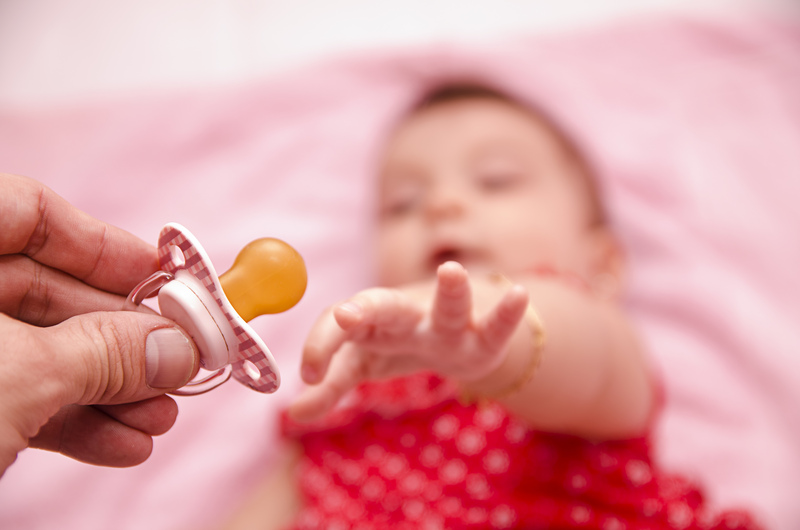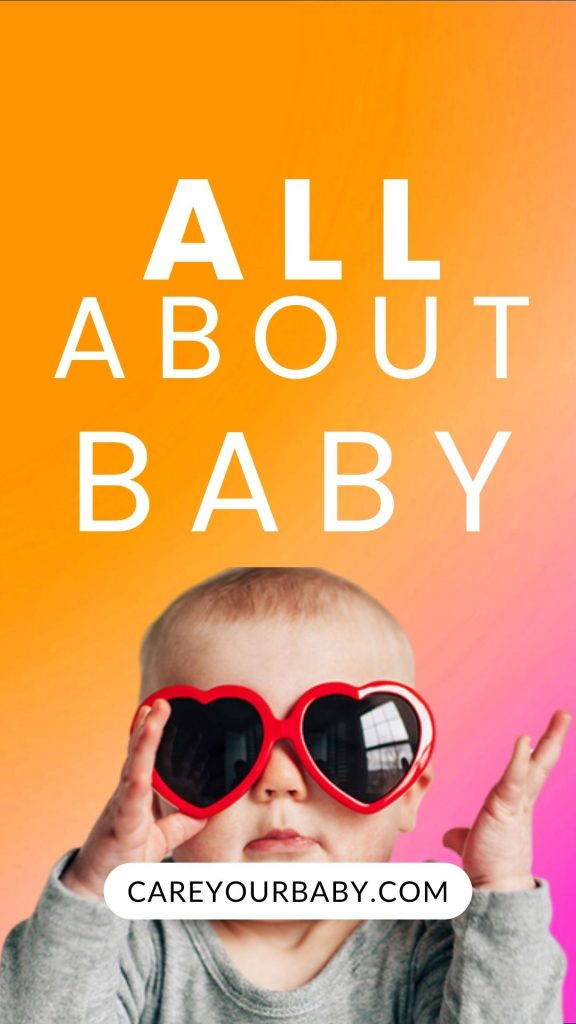When it comes to soothing your little one, pacifiers can be a parent’s best friend. Not only do they provide comfort, but they also serve various developmental needs, especially during those teething months. However, with countless options available in the market, finding the right pacifier that effectively supports your baby’s teething process can feel overwhelming. That’s why we’ve compiled a list of the best pacifiers specifically designed to ease teething discomfort while promoting healthy oral development.
Whether you’re a new parent navigating the world of teething or looking to upgrade your baby’s favorite soother, our top recommendations will help you make an informed choice for your little bundle of joy. Join us as we explore the best pacifiers for teeth that deliver both comfort and quality!
Choosing the Right Material for Teething Pacifiers

When selecting a teething pacifier, the material it’s made of plays a crucial role in both safety and comfort for your baby. The most commonly used materials include silicone, rubber, and plastic. Each of these options has its own unique benefits:
-
- Silicone: This material is versatile, durable, and easy to clean. Silicone pacifiers are often favored for their soft texture, which is gentle on sensitive gums.
-
- Rubber: Natural rubber pacifiers provide a more traditional feel and are great for babies who prefer a slightly firmer texture. They are also biodegradable and a more eco-friendly option.
-
- Plastic: While plastic is lightweight and readily available, it’s vital to choose BPA-free options to ensure safety. Many plastic pacifiers also feature colorful designs that can be visually appealing to babies.
Another important consideration is the design and texture of the pacifier. Some teething pacifiers come with textured surfaces that can provide extra relief to sore gums. Look for those that offer raised patterns or ridges, as these can help massage the gums while your baby chews. Additionally, many brands also incorporate ventilation holes into their designs, which not only enhance safety by reducing the risk of choking but also prevent moisture build-up that could lead to irritation.
| Material | Benefits | Considerations |
|---|---|---|
| Silicone | Durable, easy to clean | May retain heat |
| Rubber | Eco-friendly, traditional feel | Less durable than silicone |
| Plastic | Lightweight, colorful options | Ensure BPA-free |
Ultimately, the choice of material should align with your baby’s preferences and any specific needs they may have. It’s always a good idea to follow the manufacturer’s guidelines and safety recommendations. Don’t hesitate to try different materials to find the perfect fit for your little one, as each baby is unique in their teething journey.
Features to Look for in a Teething Pacifier
When searching for the perfect teething pacifier, there are several essential features that can significantly enhance your baby’s comfort and relief. **Material** is one of the primary considerations; it’s crucial to choose a pacifier made from **BPA-free**, **phthalate-free**, and **non-toxic** materials. Soft silicone or rubber options are generally preferred, as they provide a gentle texture that soothes sore gums while ensuring safety during teething. Additionally, look for pacifiers that are **dishwasher safe** for easy cleaning and maintenance.
Another key feature to consider is the **design** of the pacifier. Opt for pacifiers that offer a variety of shapes and sizes, as these can cater to different stages of teething. Many brands now provide pacifiers with **multi-textured surfaces** that can massage the gums effectively. A pacifier with a lightweight and ergonomic design will also make it easier for little hands to grasp and hold on to, promoting independence during the teething process.
consider the **functionality** and versatility of the pacifier. Some options come with **attached teethers** or **chillable designs** that can be refrigerated to provide extra relief for inflamed gums. Moreover, pacifiers with **ventilation holes** allow for better airflow, reducing the risk of moisture build-up and irritation. Look out for pacifiers that have easy-to-hold handles or a clip to prevent them from falling to the ground, which can be an added convenience for busy parents.
Top Brand Recommendations for Safe and Effective Teething
-
- Philips Avent: Known for their orthodontic designs, Philips Avent pacifiers provide comfort while promoting healthy oral development.
-
- Gerber: Gerber’s soft silicone pacifiers are perfect for soothing during teething, and their easy-to-clean feature adds to the convenience.
-
- NUK: NUK pacifiers are designed with a special nipple shape that mimics the natural feel of breastfeeding, making them an excellent choice for many babies.
These brands offer a variety of styles and designs tailored to different age groups. Below is a quick comparison of some popular options:
| Brand | Material | Age Range | Key Feature |
|---|---|---|---|
| Philips Avent | Silicone | 0-6 months | Orthodontic design |
| Gerber | Silicone | 0-6 months | Soothing texture |
| NUK | BPA-free Silicone | 0-6 months | Natural shape |
Additionally, consider brands that focus on teething relief while providing pacifier benefits:
-
- Comotomo: Designed with dual ventilation holes, Comotomo pacifiers help keep babies comfortable while teething.
-
- MAM: MAM pacifiers offer a unique combination of a symmetrical shape and soft surface, making them great for little ones in pain.
-
- RaZbaby: With their unique design, RaZbaby pacifiers are perfect for soothing teething gums and can also help develop oral skills.
Tips for Introducing Pacifiers During the Teething Phase
Introducing a pacifier during the teething phase can be a soothing experience for your little one. Here are some tips to ensure a smooth transition:
-
- Choose the Right Time: Wait for a moment when your baby is calm and not overly fussy. Introducing a pacifier during a teething episode might lead to rejection.
-
- Offer when Teething Pain Peaks: Look for signs of discomfort, such as excessive drooling or gnawing on objects. Present the pacifier as a comforting tool to alleviate their pain.
-
- Make it a Part of Their Routine: Integrate the pacifier into nap times or bedtime to create a comforting association, helping your baby feel secure.
When selecting a pacifier for a teething baby, consider designs that cater specifically to their needs. Opt for options that provide additional texture or cooling features. Here’s a table showcasing some recommended types:
| Pacifier Type | Benefits |
|---|---|
| Silicone Pacifiers | Soft and gentle on gums |
| Teething Pacifiers | Textured surface for gum relief |
| Chilled Pacifiers | Cooling effect soothes inflamed gums |
monitor your baby’s reaction to the pacifier and be patient. Each child has unique preferences, and it may take a few tries before they accept it. Remember to maintain hygiene by regularly cleaning the pacifier, especially during this phase when babies are prone to infections. If your baby shows signs of distress or refuses the pacifier, it’s perfectly okay to try again later or seek alternative teething relief methods.
Q&A
Q&A: Best Pacifiers for Teeth - Top Recommendations
Q: Why should I consider a pacifier for my teething baby?
A: Pacifiers can be a great soothing tool for teething babies. They provide comfort and can help alleviate some of the gum discomfort associated with teething. Additionally, a pacifier can serve as a distraction during those fussy moments, allowing both you and your baby to find some peace.
Q: What should I look for in a pacifier for teething?
A: When selecting a pacifier for a teething baby, consider the following features:
-
- Material: Look for BPA-free silicone or rubber that is soft and gentle on the gums.
-
- Shape: Choose a pacifier that is designed to mimic the natural shape of a breast or bottle nipple, as this can be more comforting for your baby.
-
- Ventilation: Pacifiers with ventilation holes can help reduce moisture, preventing skin irritation around the mouth.
-
- Durability: Ensure that the pacifier is durable enough to withstand chewing and biting
Q: Are there specific brands you recommend for teething pacifiers?
A: Yes! Here are some top recommendations:
- Natursutten Organic Pacifier: Made from 100% natural rubber, this pacifier is soft and flexible, making it great for teething.
- Nuk Orthodontic Pacifier: Designed to promote healthy oral development, it features a nipple shape that supports the natural development of teeth.
- Tommee Tippee Closer to Nature Pacifier: With its symmetrical shape and soft silicone, this pacifier is gentle on gums and easy for babies to hold.
- MAM Night Pacifier: Perfect for nighttime, this pacifier glows in the dark and features a unique SkinSoft silicone surface that feels comfortable against baby’s skin.
Q: How do I clean and care for pacifiers?
A: It’s important to keep pacifiers clean to ensure your baby’s health. Here are some tips:
-
- Boil: Before first use, boil pacifiers in water for 5 minutes to sterilize them.
-
- Wash: Regularly wash pacifiers in warm, soapy water. Rinse thoroughly to remove any soap residue.
-
- Check for wear: Regularly inspect pacifiers for signs of wear or damage. Replace them if you notice any cracks or tears.
Q: How can I encourage my baby to use a pacifier?
A: Here are a few tips to help your baby accept a pacifier:
-
- Timing: Offer the pacifier when your baby is calm and content, rather than during a fussy moment.
-
- Nipple shape: Make sure the pacifier’s shape aligns with your baby’s natural sucking preference.
-
- Taste: Some pacifiers are available with flavor options. Consider introducing flavored pacifiers to intrigue your baby.
Q: At what age should I stop using a pacifier?
A: The American Academy of Pediatrics suggests that pacifier use should be gradually weaned by age 2 to avoid potential dental issues. Each child is different, so it’s essential to pay attention to your child’s needs and habits. If you have concerns, consult your pediatrician for personalized advice.
Q: Are pacifiers safe for my baby’s teeth?
A: While pacifiers can be safe for your baby’s teeth, prolonged use beyond the age of 2 can lead to dental problems, such as misalignment or changes in bite. Choose orthodontic options and monitor usage to ensure your child’s oral health is not compromised.
Q: What if my baby resists using a pacifier?
A: If your baby doesn’t take to a pacifier, don’t worry! Every baby is different, and some may simply prefer other forms of comfort. Explore other soothing methods such as teething rings, gentle massaging of the gums, or cold washcloths to help ease teething discomfort.
Conclusion
Choosing the right pacifier for your teething baby can make a world of difference. By considering their needs and preferences, you can select a pacifier that provides comfort and support while promoting healthy oral development. Remember, it’s always best to consult with your pediatrician if you have any concerns!
Closing Remarks
As we wrap up our exploration of the best pacifiers for teething, we hope this guide has provided you with valuable insights to help soothe your little one through this challenging stage. Remember, the right pacifier can not only offer comfort but also support healthy oral development as teeth emerge. As each baby is unique, it’s essential to consider their individual preferences and needs when making your selection.
Whether you choose a silicone option for its durability or a natural rubber pacifier for its softness, the key is to prioritize safety and comfort. Don’t hesitate to consult with your pediatrician if you have any concerns about your baby’s teeth or pacifier usage.
Thank you for joining us on this journey to find the perfect pacifier solution. Wishing you and your baby lots of cozy moments and happy teething experiences!

